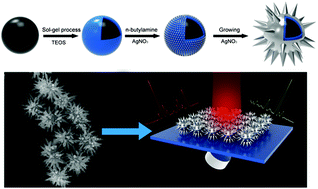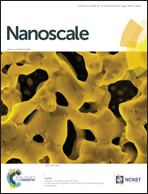Sonochemical synthesis of highly branched flower-like Fe3O4@SiO2@Ag microcomposites and their application as versatile SERS substrates†
Abstract
We report a novel strategy for the synthesis of magnetic-based flower-like silver composite microspheres (Fe3O4@SiO2@Ag microflowers) with a highly branched shell structure through a sonochemical-assisted method. The obtained Fe3O4@SiO2@Ag microflowers possess good dispersity, high magnetic responsiveness, and highly reproducible structures. The size and morphology of the silver petal shell of these microflowers can be easily controlled by varying the experimental parameters. The silver petal provides an effectively large surface area for forming sufficient plasmonic hot spots and capturing target molecules. The microscale magnetic core endows microflowers with superior magnetic nature to enrich targeted analytes and create abundant interparticle hot spots through magnetism-induced aggregation. Hence, Fe3O4@SiO2@Ag microflowers could be a versatile SERS substrate, as verified by the detection of the non-adsorbed R6G molecules and the adsorbed pesticide thiram, with a detection limit as low as 1 × 10−14 M and 1 × 10−11 M, respectively. We further demonstrate that aptamer-functionalized microflowers can easily capture S. aureus in tap water and significantly enhance their SERS signal. Moreover, the microflowers can be easily recycled because of the intrinsic magnetism of the Fe3O4 cores, which indicate a new route in eliminating the “single-use” problem of traditional SERS substrates. These advantages make the microflowers powerful SERS probes for chemical and biological analyses.


 Please wait while we load your content...
Please wait while we load your content...